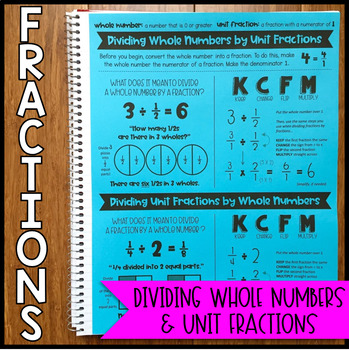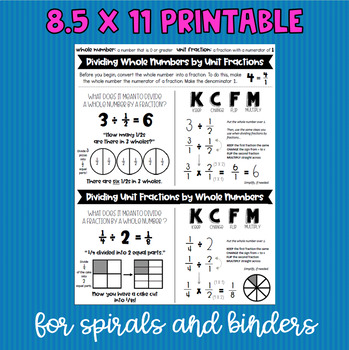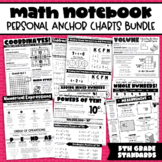Math Notebook: Dividing Whole Numbers and Unit Fractions (Personal Anchor Chart)
- Zip
What educators are saying
Also included in
- These notebook pages will come in handy as you learn about fractions this year! Students can add them to their interactive math spirals, binders, or composition books to use as "cheat sheets" for all things related to fractions. You can also create packets or mini booklets for parents... to keep thePrice $7.50Original Price $10.00Save $2.50
- This resource includes all of my 5th grade personal anchor charts and more will be added as I create them! These helpful pages will be a welcome addition to fifth grade math notebooks and binders. My students also posted them in their work area at home during remote learning. Parents will appreciatePrice $23.99Original Price $28.00Save $4.01
Description
This cheat sheet will come in handy as you learn about dividing fractions by whole numbers and whole numbers by fractions! This page will be a helpful addition to fifth grade math notebooks. Parents will appreciate having an explanation of the CCSS 5.NF.B.7 standards as homework help as well.
Notebook Pages fit:
- 8.5 x 11" spiral notebooks and binders
- smaller notebooks and composition books - printing instructions included
Click here for the complete FRACTION NOTEBOOK BUNDLE!
STANDARDS:
CCSS 5.NF.B.7
Apply and extend previous understandings of division to divide unit fractions by whole numbers and whole numbers by unit fractions.
CCSS 5.NF.B.7.A
Interpret division of a unit fraction by a non-zero whole number, and compute such quotients. For example, create a story context for (1/3) ÷ 4, and use a visual fraction model to show the quotient. Use the relationship between multiplication and division to explain that (1/3) ÷ 4 = 1/12 because (1/12) × 4 = 1/3.
CCSS 5.NF.B.7.B
Interpret division of a whole number by a unit fraction, and compute such quotients. For example, create a story context for 4 ÷ (1/5), and use a visual fraction model to show the quotient. Use the relationship between multiplication and division to explain that 4 ÷ (1/5) = 20 because 20 × (1/5) = 4.
CCSS 5.NF.B.7.C
Solve real world problems involving division of unit fractions by non-zero whole numbers and division of whole numbers by unit fractions, e.g., by using visual fraction models and equations to represent the problem. For example, how much chocolate will each person get if 3 people share 1/2 lb of chocolate equally? How many 1/3-cup servings are in 2 cups of raisins?
----------------------------------------------------
FONTS USED IN THIS PRODUCT:







